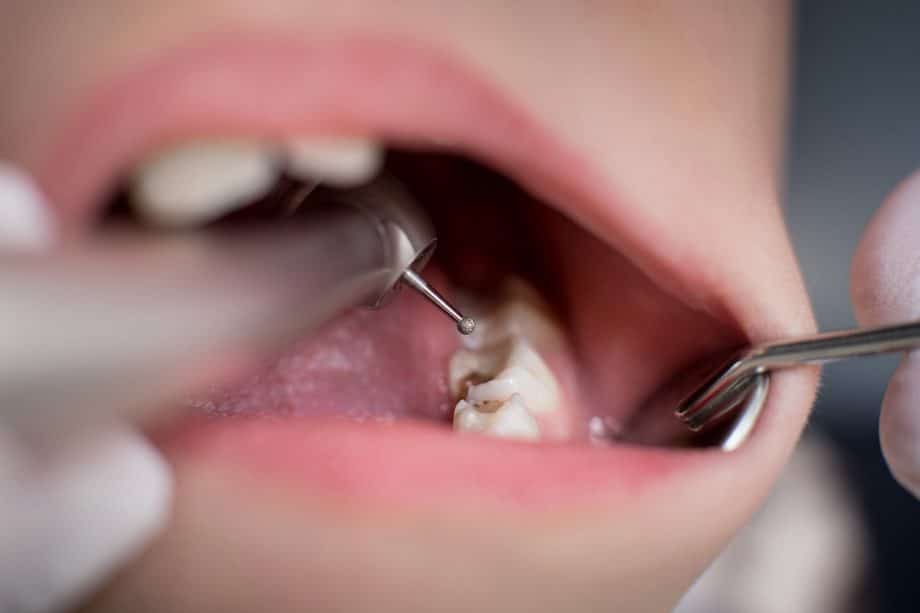Having a dental filling shouldn’t bring you long-term discomfort. While some sensitivity after getting a filling is common, it typically lasts only a brief period. Most people find their teeth adjusting within a few weeks. However, if you still feel that sharp, unwelcome jolt when biting into ice cream or sipping hot coffee weeks later, it’s a sign you should look closer into what might be causing this lingering problem. Understanding the reasons behind tooth sensitivity after fillings and knowing how to deal with them can make a big difference in your overall oral health.
What Defines Tooth Sensitivity?
Tooth sensitivity happens when you feel a sudden ache or discomfort, often triggered by something hot, cold, sweet, or acidic. It’s surprisingly common, affecting an estimated 45 million adults in the U.S. alone. The sensitivity usually stems from irritation of the nerve inside the tooth or exposure of the dentin layer (the layer beneath your tooth’s outer enamel). After a filling, this temporary irritation is natural, but it’s essential to understand how long this sensitivity should last and when it might indicate a deeper issue.
Short-Term vs. Long-Term Sensitivity
Short-term sensitivity right after a dental procedure like getting a filling is not unusual. This discomfort often occurs because of inflammation in the pulp (the innermost layer of your tooth) or mild trauma resulting from the procedure itself. Typically, this sensitivity resolves itself within two to four weeks as the tooth calms and adjusts to the filling.
However, long-term sensitivity extending beyond four weeks is not normal. If the discomfort increases or doesn’t subside after this adjustment period, it could mean there’s an underlying issue. Being able to distinguish between these types of sensitivity is key to determining whether you simply need some time or faster dental intervention.
Causes of Prolonged Tooth Sensitivity
Several reasons could explain why your tooth feels sore or sensitive for a longer period after a filling. Some are minor and easy for a dentist to fix, while others may require more immediate attention.
Interference with Your Bite
One common culprit behind prolonged sensitivity is a filling that interferes with your natural bite alignment. Picture this scenario: your teeth should meet evenly when you chew or clench. If the filling is too high, it throws off this balance, creating extra pressure on the treated tooth. Over time, this imbalance can wear down the filling or lead to tiny cracks in the material. These cracks may expose the tooth’s inner layers, causing irritation and sensitivity.
A misaligned bite is easy to fix. Your dentist can reshape or smooth the filling to ensure your teeth fit together properly. If your bite feels off immediately after your procedure, don’t hesitate to call your dentist rather than assuming it’s part of the process.
Potential Infection
Though rare, an infection can sometimes develop after a filling. This happens if bacteria manage to seep into the tooth during the procedure or if the decay was extensive and not entirely removed. Infection can aggravate the tooth pulp, causing not just sensitivity but also pain, swelling, or redness around the affected area.
For example, if you notice throbbing pain that doesn’t subside or worsens over time, it’s often a key sign of an infection. Prompt treatment, such as antibiotics or further dental work like a root canal, can address the problem before it escalates.
Cracks or Damage
Your teeth face a lot of wear and tear daily, whether from chewing, stress, or grinding. If the filling itself cracks or the tooth sustains damage, it can expose the sensitive inner nerves and tissues. For instance, biting down on hard foods or grinding your teeth at night could potentially cause these cracks. This type of sensitivity usually feels sharp and sudden, often triggered when chewing something specific.
If you suspect damage, schedule a visit to your dentist as soon as possible. Fixing this early can prevent future complications, such as tooth decay spreading beneath the filling or complete tooth fracture.
Pre-Existing Sensitivity in Teeth
Some people naturally have more sensitive teeth, and having a filling done can temporarily heighten this. You might already experience sensitivity due to exposed roots, receding gums, or thin enamel. When you add a filling into the mix, the extra strain can worsen discomfort.
Thankfully, there are ways to ease pre-existing tooth sensitivity while waiting for your tooth to adjust. Consider these practical tips:
- Use Toothpaste for Sensitive Teeth: These products can help desensitize your nerves and provide relief over time. Look for toothpaste with ingredients like potassium nitrate.
- Maintain Proper Brushing Habits: Use a soft-bristled toothbrush and apply gentle pressure while brushing to avoid irritating sensitive areas.
- Try Warm Saltwater Rinses: Rinsing your mouth with warm salt water can help reduce inflammation and soothe discomfort in your gums and teeth.
Allergic Reactions to Filling Material
Though uncommon, some people might experience allergies to the materials used in dental fillings, such as amalgam or composites. Symptoms of an allergic reaction include rash, itching, or persistent oral discomfort extending beyond typical sensitivity. If you know you’ve had adverse reactions to certain materials before, be sure to communicate clearly with your dentist so they can choose an alternative filling material for you.
When to Contact Your Dentist
Prolonged sensitivity after a filling isn’t something you should just tolerate. It’s important to recognize when the issue requires professional attention. Here are clear signs that you should follow up with your dentist:
- The sensitivity lasts beyond four weeks and doesn’t show signs of improvement.
- You experience sharp or worsening pain instead of mild discomfort.
- Additional symptoms such as swelling, redness, or fever accompany the sensitivity.
- You feel a noticeable change in your bite alignment.
- You suspect a crack, chip, or other physical damage to the filling.
By addressing these issues early, you can prevent long-term complications like deep infections or further tooth damage.
How to Prevent Post-Filling Sensitivity
You can't always avoid sensitivity after a filling, but there are steps you can take to reduce your risk before and after treatment:
- Ask Questions Before Your Procedure: Talk to your dentist about what to expect during recovery and the materials being used for your filling. Being informed lets you prepare for any potential sensitivities, especially if you’ve had issues in the past.
- Avoid Hard and Sticky Foods: After a filling, stick to soft foods for a few days to avoid putting undue pressure on the newly treated tooth.
- Practice Stress Reduction Techniques: If you grind your teeth, consider wearing a mouthguard at night to protect against further damage.
Frequently Asked Questions About Sensitivity After Fillings
How long should I wait to eat after getting a filling?
It is generally recommended to wait at least 24 hours before eating hard or sticky foods. However, you can eat soft foods almost immediately if your dentist uses a composite filling that hardens quickly under a special light.
Is it normal to feel sensitivity after a filling?
Yes, mild sensitivity to hot, cold, or pressure is common after a filling and usually subsides within a few days. If the sensitivity persists or worsens, contact your dentist to ensure there are no underlying issues.
Experiencing discomfort or sensitivity after a filling? You’re not alone—this is a common issue that can happen for a variety of reasons, such as bite alignment or nerve irritation. At Oak Road Dentistry, we’re here to help with personalized care tailored to your needs. Don’t let dental discomfort hold you back—reach out to us today and let us take care of your smile!

